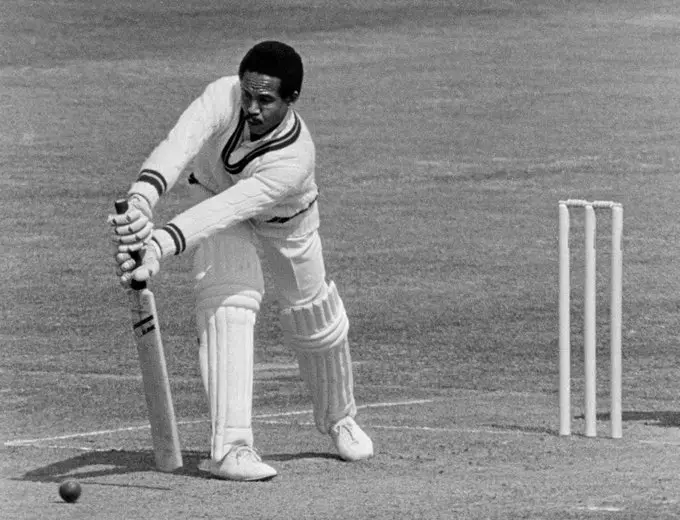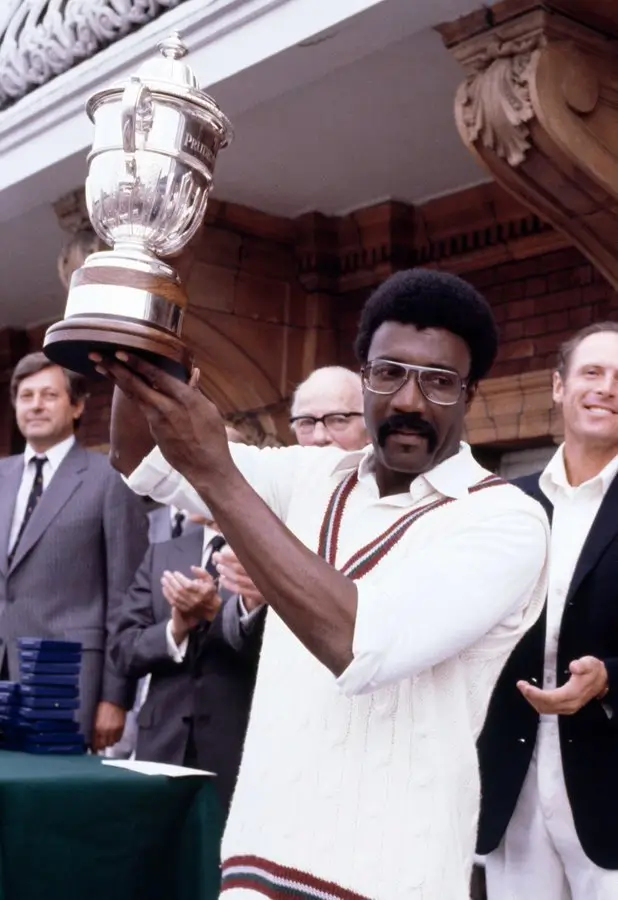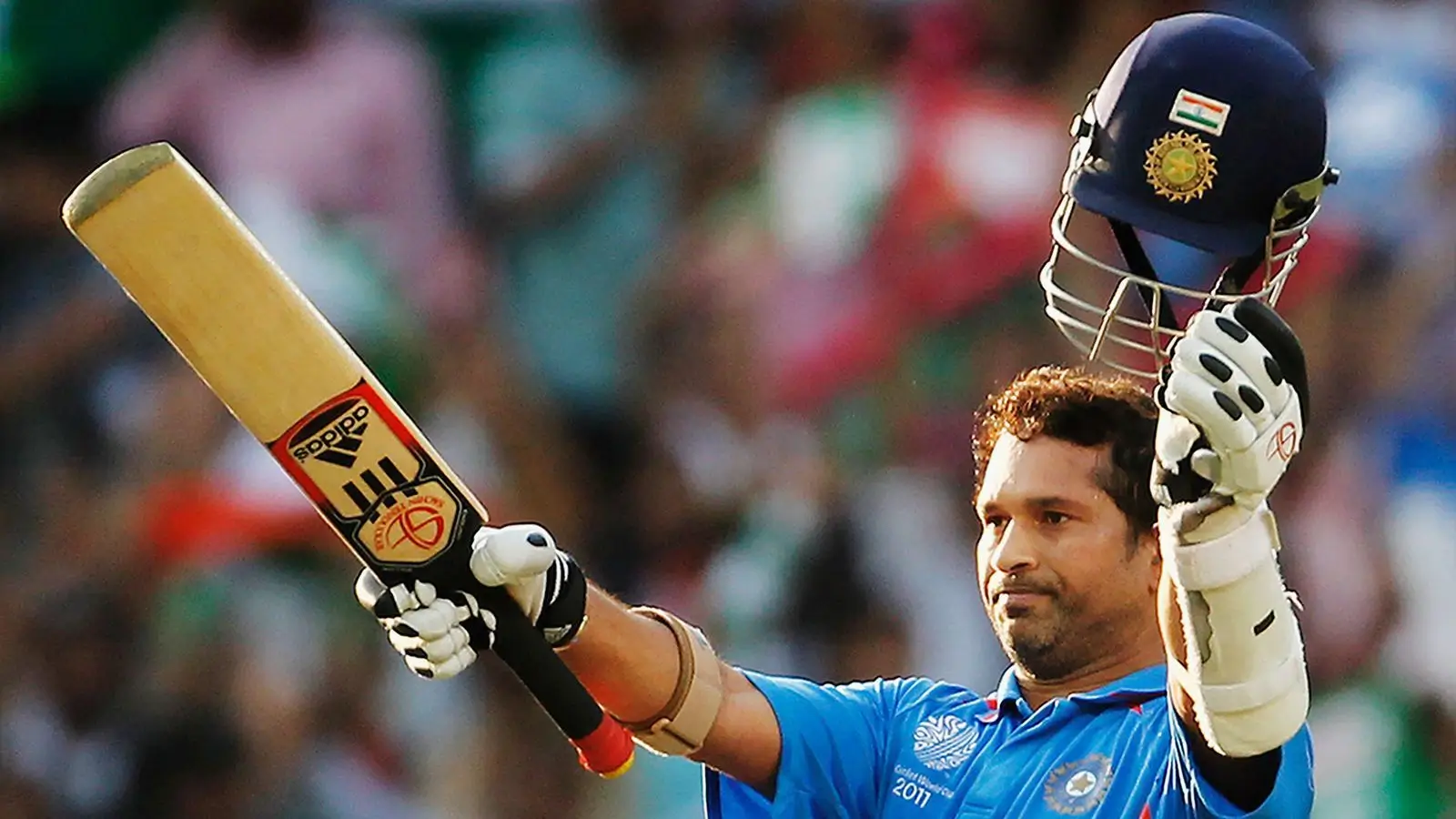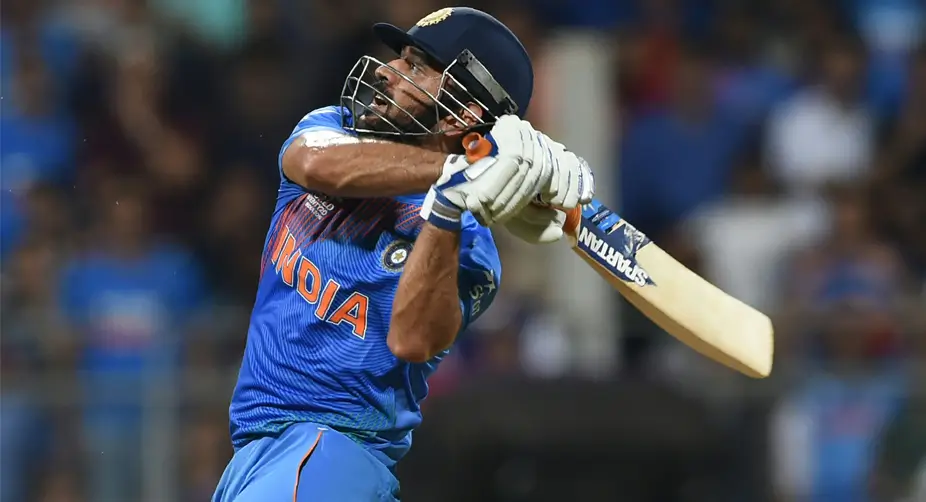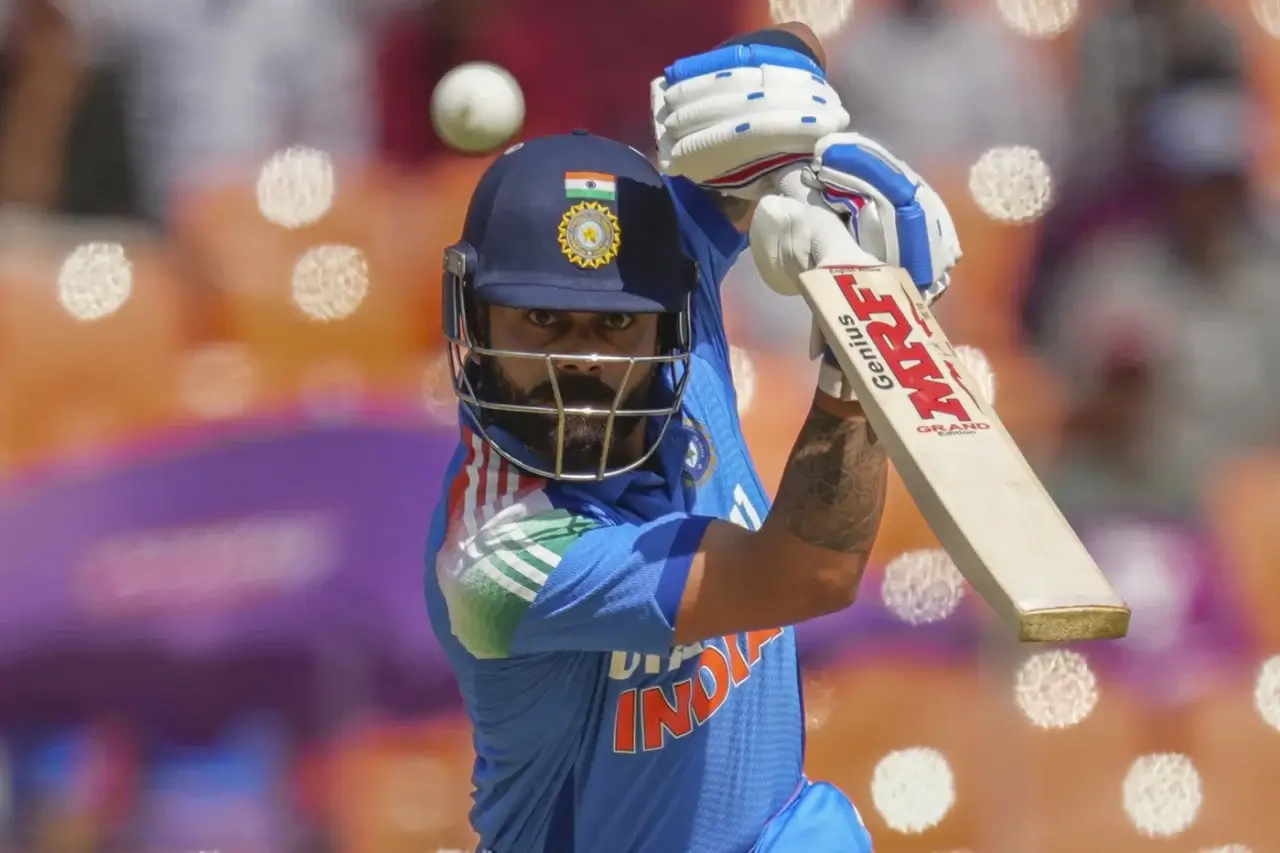Cricket isn’t just a sport—it’s a legacy shaped by extraordinary individuals. As a long-time fan and writer, I’ve marveled at how legends like W.G. Grace, Don Bradman, and Sachin Tendulkar turned a gentleman’s pastime into a global obsession. But who truly deserves the title “Godfather of Cricket”? It’s a question that sparks debates in stadiums, living rooms, and online forums. This article dives into the lives of six iconic players—Grace, Bradman, Sobers, Lloyd, Tendulkar, and Dhoni—each a contender for this prestigious label.
From pioneering techniques to leading teams to glory, these cricketers didn’t just play; they transformed the game. We’ll explore their stats, innovations, and lasting impact, answering what makes a godfather in cricket. Whether you’re a stats junkie or a casual fan, join me on this journey through cricket’s golden eras. Let’s uncover who stands tallest among these giants—and who might claim the mantle next. The soul of cricket lives in their stories.
What Defines a ‘Godfather of Cricket’ Legend?
The term “Godfather of Cricket” isn’t just about runs or wickets—it’s about transformation. A godfather reshapes the game through skill, leadership, and influence that echoes beyond their era. Think of W.G. Grace introducing professionalism or MS Dhoni redefining captaincy. It’s not enough to excel; they must inspire and innovate. As ESPN notes, legends like Don Bradman set benchmarks that still challenge players today. Skill alone doesn’t cut it—impact does. These cricketers changed how the game is played, watched, and loved.
Whether it’s Sobers’ all-round brilliance or Tendulkar’s global reach, their contributions ripple through time. Cultural significance matters too—think of India’s reverence for Sachin or the West Indies’ pride in Lloyd. A godfather leaves a blueprint for future stars, from fitness standards to tactical genius. So, as we analyze these icons, we’ll weigh their stats against their legacy. What makes them stand out? Let’s break it down with two key lenses: skill paired with innovation and leadership tied to cultural resonance.
Skill and Innovation as Key Markers
A “Godfather of Cricket” must master their craft and push boundaries. W.G. Grace brought overarm bowling into the mainstream, a game-changer in the 19th century. Don Bradman’s 99.94 Test average—still untouched—shows the skill that defied norms. Then there are Sobers, who hit six sixes in an over, a feat unheard of in 1968. These moments weren’t just brilliance; they were innovations that shifted cricket’s DNA.
Tendulkar’s double ton in ODIs rewrote batting limits, while Dhoni’s helicopter shot added flair to the finishing. Skill without innovation is fleeting, but these legends fused both. As per Wikipedia, Grace’s 54,000+ first-class runs set a professional tone.
Leadership and Cultural Impact
Leadership isn’t just captaincy—it’s influence that transcends the field. Clive Lloyd’s back-to-back World Cup wins in 1975 and 1979 made the West Indies a feared unit. MS Dhoni’s calm under pressure led India to three ICC titles, earning him “Captain Cool” status. These weren’t just victories; they were cultural shifts. Lloyd united a diverse team, while Dhoni made cricket a religion in India’s small towns.
Tendulkar carried a billion hopes, as BBC once said, turning stadiums into shrines. Grace’s larger-than-life persona drew crowds, professionalizing the sport. A godfather’s impact isn’t just stats—it’s how they inspire nations. Sobers embodied West Indian flair, influencing all-rounders globally. Leadership here means setting trends, from fitness to mindset, that others follow. Their legacy lives in fans’ hearts and players’ playbooks, proving cricket’s godfathers are as much cultural icons as sporting heroes.
W.G. Grace – The Pioneer of Modern Cricket
 W.G. Grace isn’t just a name; he’s cricket’s founding father. Born in 1848, he began his first-class journey at 16, blending brute power with cunning strategy. Over 44 years, he scored 55,309 runs and took 2,818 wickets, stats that scream dominance. But it’s his innovations that earn him “Godfather of Cricket” whispers.
W.G. Grace isn’t just a name; he’s cricket’s founding father. Born in 1848, he began his first-class journey at 16, blending brute power with cunning strategy. Over 44 years, he scored 55,309 runs and took 2,818 wickets, stats that scream dominance. But it’s his innovations that earn him “Godfather of Cricket” whispers.
As ESPN highlights, Grace turned a leisurely pastime into a professional sport with his overarm bowling and fitness focus. His 344 for Marylebone Cricket Club in 1868 was a statement—cricket could be fierce. A towering figure, both in stature and impact, he drew crowds and set standards.
His beard became iconic, but his legacy is deeper: he made cricket competitive. Today’s players owe their careers to his groundwork. Grace wasn’t flawless—some say he bent the rules—but his vision endures. From Victorian fields to T20 arenas, his influence lingers, proving one man can redefine a game forever.
Grace didn’t just play—he rewrote cricket’s rulebook. His overarm bowling, a shift from underarm, added pace and spin, changing the match’s tempo. As per Wikipedia, he scored 54,211 first-class runs, a testament to his batting might. But it’s his professionalism that stands out.
Revolutionizing Techniques and Professionalism
In an amateur era, Grace demanded fitness and strategy, turning cricket into a career. His 344 in a county game wasn’t luck; it was a skill honed by discipline. He pioneered forward play, a technique still taught today. Grace’s innovations weren’t subtle—they were seismic, making bowlers rethink and batsmen adapt.
He wasn’t perfect; tales of gamesmanship swirl. Yet, his push for structure laid modern cricket’s foundation. Without him, the sport might’ve stayed a gentleman’s hobby. Grace’s genius was making cricket a profession, a legacy that echoes in every pro league today.
Lasting Echoes in Today’s Game
Grace’s shadow stretches far beyond the 1900s. His fitness ethos? It’s in every gym-obsessed cricketer today. Overarm bowling? Standard now, thanks to him. As BBC notes, he drew crowds like a rockstar, setting the stage for cricket’s global fandom.
His 2,818 wickets show an all-rounder’s blueprint—think Ben Stokes or Jacques Kallis. Grace’s competitive spirit turned cricket from tea-time fun to a fierce contest. Modern T20 leagues, with their pro vibe, owe him a nod. He wasn’t just a player; he was a visionary who saw cricket’s potential.
Today’s stars, chasing records or fitness goals, channel their drive. Sure, his era lacked cameras, but his stats—55,309 runs—speak loud. Grace’s influence isn’t nostalgia; it’s alive in every boundary hit, every wicket taken. He’s the godfather who made cricket what it is.
Don Bradman – The Unmatched Batting Maestro
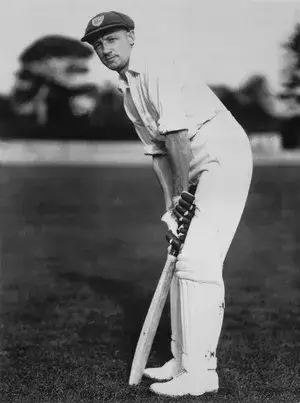 Don Bradman isn’t a cricketer—he’s a phenomenon. Born in 1908, this Aussie legend debuted at 19 and rewrote batting history. His Test average of 99.94—across 52 matches—remains untouchable, as ESPN marvels. Scoring 6,996 runs, with a peak of 452 in first-class cricket, he was a nightmare for bowlers. Bradman’s genius wasn’t just numbers; it was his method—precision, footwork, consistency.
Don Bradman isn’t a cricketer—he’s a phenomenon. Born in 1908, this Aussie legend debuted at 19 and rewrote batting history. His Test average of 99.94—across 52 matches—remains untouchable, as ESPN marvels. Scoring 6,996 runs, with a peak of 452 in first-class cricket, he was a nightmare for bowlers. Bradman’s genius wasn’t just numbers; it was his method—precision, footwork, consistency.
The 1930 Ashes, with 974 runs in seven innings, stunned England. He didn’t just dominate; he redefined excellence. His impact forced tactics like Bodyline, a desperate bid to stop him. Beyond stats, Bradman inspired a nation during the Great Depression. His legacy?
A benchmark no one’s neared. Modern batsmen study his focus, dreaming of his heights. Bradman’s not just a godfather candidate—he’s the gold standard, a name whispered in awe, proving one man’s bat can echo through cricket’s soul forever.
Record-Breaking Stats That Still Stand
Bradman’s numbers are cricket’s holy grail. A 99.94 Test average—6,996 runs in 52 matches—stands alone. His 29 centuries in 80 innings dwarf others; Sachin Tendulkar took 148 for the same. As per Wikipedia, his 452 not out in first-class cricket is a monument.
In 1930, he smashed 974 Ashes runs, including a triple ton. No one’s come close to that consistency. His 12 double centuries? Fifteen percent of his innings. Compare that to Sangakkara’s 11 in 223. Bradman’s stats aren’t just records—they’re a challenge. Bowlers wept; England tried Bodyline to slow him.
It didn’t. Today, his average is a yardstick—62 is the next best for 20+ Tests. These figures don’t fade; they taunt every batsman stepping up. Bradman’s stats are why he’s a godfather contender—unmatched, unreal, eternal.
Influence Beyond the Scoreboard
Bradman’s bat did more than score—it shaped cricket’s spirit. His 99.94 average set a bar that inspires, as BBC states, lifting Australia’s morale in tough times. The Bodyline series? Born from his dominance, it changed tactics forever. He wasn’t just a player; he was a symbol of hope during the Depression and pride post-war. His 1948 “Invincibles” tour showed attacking cricket could win hearts. Modern players, from Steve Smith to Virat Kohli, chase his shadow.
His technique—simple, ruthless—lives in coaching manuals. Bradman didn’t lead often, but his presence commanded respect. Fans flocked; records tumbled. His influence isn’t stats alone—it’s how he made cricket a saga. A godfather doesn’t just play; he transforms. Bradman did, leaving a legacy that’s not just numbers but a mindset every cricketer craves to match.
Sir Garfield Sobers – The All-Round Genius
Sir Garfield Sobers is cricket’s ultimate all-rounder. Born in 1936, this West Indian debuted at 17 and dazzled for 20 years. His 365 not out against Pakistan in 1958—a Test record for 36 years—showed his batting might. Add 235 wickets and 8,032 runs in 93 Tests, and you’ve got a legend. Sobers hit six sixes in an over in 1968, a first in first-class cricket, as ESPN recalls.
He bowled pace and spin and fielded like a dream—versatility unmatched. His flair wasn’t just skill; it was art, inspiring all-rounders like Kallis or Stokes. Sobers didn’t just play; he redefined roles, making cricket richer. His 26 Test tons and cool head lifted the West Indies’ spirit. Knighted for his impact, he’s a godfather contender for his genius across the board. Sobers’ legacy? A game where one man can do it all beautifully.
Versatility That Redefined Roles
Sobers was a cricket chameleon. Batting? His 365 did not outset a Test benchmark. Bowling? He took 235 wickets, switching from pace to spin effortlessly. Fielding? Electric. As Wikipedia notes, he scored 8,032 Test runs—57.78 average—and shone in all roles. His six sixes in an over in 1968 stunned the world, a first-class first. No one matched his range—left-hand bat, dual bowling styles, agile slips.
He didn’t just fill gaps; he rewrote the all-rounder’s job. Modern stars like Ben Stokes echo his mold, but Sobers was the original. His versatility forced teams to rethink strategies—how do you stop a man who does everything? He made cricket dynamic, proving one player could dominate all facets. That’s godfather material—a skill so broad it reshaped the game’s very structure.
A Legacy of Inspiration
Sobers’ legacy isn’t just stats—it’s a spark. His 365 not out and six-sixes feat, as BBC recounts, inspired West Indian pride during a golden era. Knighted in 1975, he’s a national hero in Barbados. His 8,032 runs and 235 wickets in 93 Tests set a bar for all-rounders—think Kallis or Shakib chasing that vibe. Sobers showed cricket could be flair and grit, influencing players to diversify their skills.
His cool demeanor under pressure? A lesson for captains everywhere. Youngsters watch his clips, dreaming of such mastery. He didn’t just play; he elevated the West Indies to dominance, a cultural force. Sobers’ impact lingers in every all-rounder’s swing or dive. A godfather inspires—and Sobers’ genius still lights up cricket’s future, proving versatility wins hearts and games.
Clive Lloyd – The Captain Who Conquered
Clive Lloyd was a colossus in cricket’s history. Born in 1944, this West Indian debuted in 1966, blending power-hitting with sharp leadership. His 242 not out against India showcased his batting, but it’s his captaincy that shines. Leading the West Indies to World Cup wins in 1975 and 1979, Lloyd forged a dynasty, as ESPN states. Across 110 Tests, he scored 7,515 runs; in 87 ODIs, 1,977 more.
His towering frame and cool head united a team of stars—Richards, Holding, Garner—into an unstoppable force. Lloyd’s emphasis on fitness and aggression changed cricket’s tempo. He didn’t just win; he dominated, making the West Indies feared globally. His legacy? A blueprint for team success and leadership. Modern captains study his calm authority. Lloyd’s a godfather for turning talent into triumph, leaving cricket stronger and fiercer than he found it.
World Cup Triumphs and Team Spirit
Lloyd’s captaincy was golden. His 1975 and 1979 World Cup wins—back-to-back—set a standard, as Wikipedia logs. Scoring 102 in the ’75 final, he led by example. His 242 not out in a Test against India? Pure class. But it’s his team spirit that defines him. Lloyd molded raw talents—Viv Richards, Malcolm Marshall—into a unit. His 7,515 Test runs across 110 matches show his backbone, yet he prioritized collective glory. He pushed fitness, a novel idea then, making his side relentless. Those victories weren’t flukes; they were strategy and grit. Lloyd’s leadership turned the West Indies into cricket’s juggernaut, a legacy of unity and power. A godfather builds dynasties—Lloyd did, with trophies and a vibe that still inspires winning teams today.
Shaping West Indies Dominance
Lloyd didn’t just lead—he sculpted an era. His 1970s-80s West Indies ruled cricket, and he was unbeaten in the Test series for 15 years, as BBC notes. With 7,515 Test runs and 19 centuries, he was a rock. But his real gift? Making a diverse squad click.
He harnessed pace bowlers Roberts and Holding into a fearsome attack, while batsmen like Richards thrived under his wing. His 242 not out against India in 1976 showed his might, yet he shared the spotlight. Lloyd’s aggression and fitness focus shifted cricket’s gears, influencing modern play.
His dominance wasn’t stats alone—it was a cultural roar for the Caribbean. A godfather shapes a game’s soul—Lloyd did, turning the West Indies into a symbol of power and pride that echoes in cricket’s history books.
Sachin Tendulkar – The Modern Cricket Icon
Sachin Tendulkar is cricket’s heartbeat. Born in 1973, he debuted at 16 and played 24 years, amassing 34,357 runs across 664 matches. His 200 not out in an ODI against South Africa in 2010—the first double ton—broke barriers. With 100 international centuries, as ESPN hails, he’s unmatched. Tendulkar’s technique—elegant, precise—awed fans and foes.
He carried India’s hopes, scoring 15,921 Test runs and 18,426 in ODIs. His 2011 World Cup win was a dream fulfilled. Beyond stats, he globalized cricket, especially in India, where TVs went off when he got out, per BBC.
His humility won hearts, making him “God of Cricket.” Tendulkar’s influence? Every kid with a bat mimics him. A godfather transforms fandom and play—he did both, leaving a legacy of records and reverence that defines modern cricket’s soul.
Records That Transcend Generations
Tendulkar’s stats are cricket’s crown jewels. His 100 centuries—51 in Tests, 49 in ODIs—across 34,357 runs are unreal, as Wikipedia lists. First to 200 not out in ODIs, he redefined batting limits. His 15,921 Test runs at 53.78 average show consistency; 18,426 ODI runs at 44.83 prove adaptability.
Scoring 673 in the 2003 World Cup crushed records. No one’s topped his 664 matches or century haul—Kohli’s at 80 and counting. Tendulkar’s numbers aren’t just stats; they’re milestones for every batsman. His 24-year run, from 1989 to 2013, spans eras, yet he stayed supreme.
A godfather sets untouchable bars—Sachin did, with records that taunt today’s stars. They’re not just figures; they’re a legacy kids chase in every gully match.
Global Reach and Fan Adoration
Tendulkar wasn’t just a player—he was a movement. His 34,357 runs made him India’s pride, but his reach went global, as BBC observed. Fans called him “God of Cricket,” shutting TVs when he fell. His 100 centuries sparked celebrations worldwide. In India, cricket became religion—stadiums turned temples.
His 200 not out in 2010 had a billion cheering. Tendulkar’s humility, despite fame, won hearts, inspiring kids from Mumbai to Melbourne. He globalized cricket, drawing new fans, especially during the 2011 World Cup win. A godfather shifts culture—Sachin did, making cricket a universal language.
His influence? Every young batter dreams of his grace. Tendulkar’s legacy isn’t just running; it’s the love he ignited, burning bright in cricket’s modern age.
MS Dhoni – The Cool-Headed Game Changer
MS Dhoni is cricket’s calm storm. Born in 1981, he debuted in 2004, blending explosive batting with razor-sharp keeping. His 224 against Australia in 2013 showed his grit, but it’s his leadership that shines. Leading India to the 2007 T20 World Cup, 2011 ODI World Cup, and 2013 Champions Trophy, he’s unmatched, as ESPN notes.
Across 538 matches, he scored 17,266 runs and made 829 dismissals. Dhoni’s “helicopter shot” and cool head redefined finishing. From a small-town kid to “Captain Cool,” he turned India into a powerhouse.
His tactical nous—think 2011 final six—won hearts. Dhoni’s influence? Wicketkeeper-batsmen and cool captains everywhere. A godfather changes how cricket’s played—he did, with poise and trophies. His legacy? A blueprint for pressure play, inspiring a generation to stay chill and win big.
Leadership That Won Titles
Dhoni’s captaincy was magic. His 2007 T20 World Cup win kicked off a golden run—2011 ODI World Cup and 2013 Champions Trophy followed, as Wikipedia logs. Only captain with all three ICC crowns. His 17,266 runs in 538 matches were vital, but it’s his decisions—like that 2011 final six—that define him.
Leading India in 332 games, he won 178, per ESPN. Dhoni’s calm turned chaos into victory, inspiring leaders like Kane Williamson. From Ranchi to world stages, he made India believe. His 224 in a Test against Australia? A captain’s knock. A godfather leads to glory—Dhoni did, with a trophy cabinet and a style that’s studied in cricket schools. His reign reshaped India’s game.
Redefining Wicketkeeping and Finishing
Dhoni rewrote two roles. His 829 dismissals—634 catches, 195 stumpings—in 538 matches set a keeper’s bar, as BBC states. Lightning stumpings, like 0.08 seconds, stunned batsmen. Then, his batting—17,266 runs, with a 224 high—made him a finisher’s icon.
The “helicopter shot” became legend, sealing chases like the 2011 World Cup. Before him, keepers weren’t finishers; he changed that. His 50.53 ODI average under pressure is gold. Modern keepers like Rishabh Pant owe him.
A godfather innovates—Dhoni did, merging agility behind stumps with clutch batting. His 224 against Australia in 2013 showed both. He didn’t just play; he crafted a new cricket art, leaving a legacy of cool finishes and sharp gloves that echoes in every tight chase.
Who’s Next in Line for the Title?
The “Godfather of Cricket” mantle awaits a new heir. Virat Kohli’s aggression and 27,000+ runs make him a contender—his fitness revolution’s already here. Ben Stokes, with match-turning all-round feats like the 2019 World Cup final, channels Sobers’ spirit. Kane Williamson’s calm leadership and 8,000+ Test runs echo Dhoni’s poise, as ESPN suggests.
Virat Kohli isn’t just a cricketer—he’s a revolution. Born in 1988, he debuted in 2008 and quickly became India’s batting backbone. With over 27,000 international runs, including 80 centuries, he’s chasing Tendulkar’s throne, as ESPN tracks. His 183 against Pakistan in 2012—a chase masterclass—showed his fire. Kohli’s captaincy? Test wins in Australia and England are rare feats. Beyond stats, he’s transformed cricket’s ethos—fitness, aggression, consistency. His 70+ fifties in ODIs and a 58.67 average scream reliability.
His Excellency
Leading India to the 2017 Champions Trophy final, he set new leadership bars. Kohli’s not just about runs; he’s about attitude—think 2016 T20 World Cup heroics. A godfather contender, he’s reshaping how cricketers train and play. Fans adore his passion; foes respect his grit. Still in his prime as of April 2025, Kohli’s legacy is growing. Could he be the next “Godfather of Cricket”? His journey suggests he’s already carving that path.
These stars don’t just shine—they shift cricket’s gears. Kohli’s chase mastery, Stokes’ grit, Williamson’s consistency—each brings something godfather-like. Future tech, like AI stats or T20’s rise, could amplify their impact.
Emerging names like Babar Azam or Joe Root might surprise too. A godfather needs time to cement influence, but these players are building legacies. Who’ll claim it? The one who blends skill, innovation, and global sway. Cricket’s next chapter is theirs to write—let’s watch who steps into the pantheon.
Virat Kohli’s Aggressive Blueprint
Kohli’s a force. Over 27,000 runs—13,000+ in ODIs at 58.67—scream consistency, as Wikipedia tracks. His 50-centuries rival Tendulkar’s pace. Leading India to Test wins in Australia, he’s fierce. His fitness push? Cricketers now hit gyms hard. Chasing 300+?
He’s the king—think 2016 T20 World Cup. ESPN calls him a modern great. Kohli’s aggression isn’t just running; it’s a mindset—attack, dominate, win. His 183 against Pakistan in 2012? A statement. A godfather reshapes norms—Kohli’s doing it, making cricket fitter and bolder. He’s not there yet; legacy needs time. But his blueprint’s clear: play hard, lead harder. If he keeps this up, the title “Godfather of Cricket” might just be his.
Mastery in Chasing and Record-Breaking Feats
Kohli’s a chase king. His 27,000+ runs—13,848 in ODIs at 58.67—prove it, per Wikipedia. With 50 ODI tons, he’s second only to Sachin. His 183 against Pakistan in 2012? A 330-run chase dismantled in style. In T20s, his 82 not out vs. Australia in 2016 clinched a World Cup spot. No one master’s pressure like him—26 centuries chasing, a record.His recent century against Pakistan in the CT 2025 is proof of his skills.
As ESPN notes, his 7,000+ Test runs include 27 tons, rivaling legends. He’s not just piling stats; he’s breaking molds. His 243 against Sri Lanka in 2017 showed endurance. A godfather sets records that stun—Kohli does, with a bat that talks in clutch moments. He’s not there yet, but his numbers hint at immortality. Youngsters watch, awed, as he turns games solo. That’s godfather material brewing.
Emerging Stars to Watch
New blood’s rising. Ben Stokes—5,000+ runs, 200 wickets—turns games, like 2019’s Headingley heroics, per BBC. He’s Sobers reborn. Kane Williamson’s 8,828 Test runs at 55.17 ooze class; his 2021 WTC win seals leadership cred. Babar Azam’s 5,000+ ODI runs at 56.83 hint at Tendulkar’s grace, as ESPN notes.
Joe Root’s 12,000+ Test runs chase records with flair. These stars blend skill with impact—Stokes’ grit, Williamson’s calm, Azam’s poise, Root’s hunger. A godfather needs more than stats—think innovation and global pull.
They’re young, but T20’s boom and tech like Hawk-Eye could boost their reach. Who’ll rise? The one who shapes cricket’s next era. Keep eyes on them—they’re crafting legacies that might echo Grace or Bradman.
Conclusion
Cricket’s godfathers—Grace, Bradman, Sobers, Lloyd, Tendulkar, Dhoni—didn’t just play; they sculpted the game. Grace built its bones, Bradman its brain, Sobers its heart. Lloyd gave it muscle, Tendulkar soul, Dhoni nerve. Each left a mark—54,000 runs, 99.94 average, six sixes, World Cup doubles, 100 centuries, and three ICC crowns. As ESPN and BBC affirm, they turned willow and leather into legend. Their innovations—overarm bowling, fitness, all-around flair, team unity, global fandom, and cool finishes—live in today’s cricket.
Who’s the true “Godfather of Cricket”? Depends on your lens: stats, impact, or love. But their collective legacy? Undeniable. Now, Kohli, Stokes, and others vie to join them, blending modern grit with timeless traits. Cricket’s flame burns brighter because of these titans. From Victorian pitches to T20 lights, their stories inspire. The godfather title isn’t one—it’s many, a pantheon of giants ensuring cricket’s soul stays immortal.


